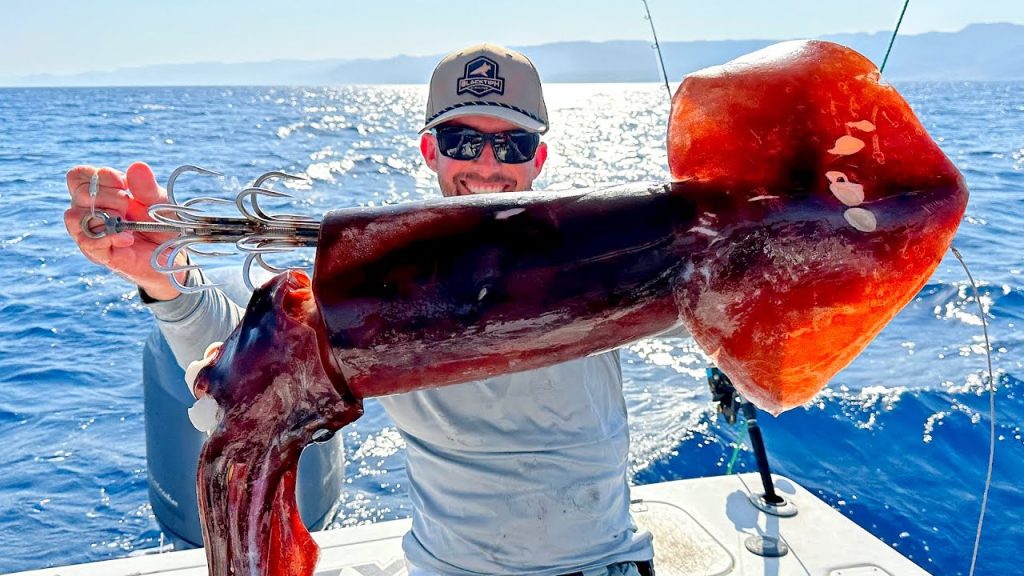Squid fish are marine animals that fall under Cephalopoda, which contains cuttlefish and octopuses. They are known for their intelligence, agility, and unique skills like rapid colour-changing and ink-spraying. Their unparalleled presence of these animals in global cuisines makes them a delicacy called “calamari.” In this article, we will cover different species of squid, their habitats, and their ecological roles. How they are consumed in the culinary world, their nutritional values, and answer some questions regarding these wonderful creatures.
Diversity of Squid Species
Cephalopoda includes over 300 discovered squid species. They are different in sizes, habitats, and behaviour. Some remarkable species of squid fish include:
Common Squid (Loligo vulgaris): Commonly found in the Mediterranean Sea and Atlantic Ocean. They can grow as much as 30 centimetres in length. This species is considered a delicacy in European and Asian dishes.
Humboldt Squid (Dosidicus gigas): Considered aggressive hunters and located in the eastern Pacific Ocean near Central and South America. They can reach a height of 1.5 metres.
Giant Squid (Architeuthis dux): Located in the deep ocean waters. They can grow larger than 12 metres. Their unusual nature makes them highly sought after for scientific studies and has put them in relatable myths.
Colossal Squid (Mesonychoteuthis hamiltoni): Inhabiting the waters around Antarctica, this species is heavier than the giant squid, with some individuals weighing over 500 kilograms. They have large hooks on their tentacles which are assisting in relaying prey to their mouth.
Japanese Flying Squid (Todaroce pacificus): Residing in the western Pacific Ocean, which lies close to Japan, China, and Korea. These squid grow up to 50 centimetres and are crucial to Japanese cuisine, featuring in dishes like sushi and tempura.
Habitat and Distribution
Squid fish occupy a broad spectrum of the marine environment, from shallow coastal waters to the deep ocean’s abyssal zones. Their range is determined by the particular needs of each species, the nature of the prevailing conditions, and the presence of food.
Tropical and temperate areas: Coastal waters: Regions such as the common squid and the Japanese flying squid are found in warmer and shallow waters. These regions also contain continental shelves from which dramatic amounts of food can be obtained.
Deep Sea: Colossal and giant squid are specially adapted to the deep ocean’s high pressure and low light conditions. This makes them very difficult to study and observe.
Tropical and temperate regions: Strongly preferred by the Humboldt squid are the temperate waters. They are often populated with large schools capable of impacting local fisheries.
Ecological Importance
Squids serve as a fundamental component of the marine food chain because they are both predators and prey. Their diet consists of smaller fishes, crustaceans, and even smaller squid; however, they, too, are preyed upon by whales, sharks, and seabirds. Rapid growth and a short life span allow squids to adapt to changes in the environment. They make them vital indicators of the health of the oceans.
Culinary Uses
Because of their soft body and subtle taste, squids are widely served in different culinary forms like:
Fried Squid (Calamari): Because of its incredible taste, it is battered and deep-fried, served with dipping sauces.
Grilled Squid: Squids are marinated beforehand and char-grilled. It is very common in Mediterranean and Asian regions.
Stuffed Squid: Squids can be filled with vegetables, meats, and grains to be baked or simmered.
Squid Ink Dishes: The ink of squid can be used to flavour and colour other dishes like pasta and risotto.
Raw Preparations: Often served as sushi or sashimi in Japanese cuisine, squid is treated delicately to retain its soft taste.
Nutritional Profile
Aside from being adaptive in the kitchen, squid fish offer several benefits:
High-Quality Protein: Containing a noteworthy amount of protein. It is crucial for the development and repair of muscles.
Omega-3 Fatty Acids: These necessary fats help maintain the health of the heart and the brain.
Vitamins and Minerals: Squid contains B12 and E vitamins and also selenium, which is an essential mineral and has antioxidant features.
It is worth mentioning here that some fried preparations of squid tend to be high in cholesterol and sodium. These components require careful monitoring and therefore, moderation and mindful cooking approaches are essential.
FAQs
Are squid and calamari the same?
Yes, “calamari” is how squid is often referred to in the culinary world, particularly in Italy and in Mediterranean countries.
Can squid be eaten raw?
Yes, squid can be consumed raw, especially in sushi or sashimi dishes. Their freshness and safe preparation from a health standpoint are vital.
How do squid defend themselves from predators?
Squid evade predators using several mechanisms including rapid colour change to blend into their surroundings, expelling ink to create a smokescreen, and jet-propelled fast movements to escape threats.
Are squid populations sustainable?
Even though many squid species have strong populations due to their rapid growth and reproduction, some are prone to overfishing and changes to their environment. Efforts need to be made to ensure these fish are caught sustainably.
What is squid ink used for?
Squid ink is used in culinary arts to impart a distinct salty flavour as well as colour to dishes such as pasta, risotto, and various sauces.
Conclusion
Squid fish are extraordinary animals that enhance the biodiversity of the oceans and add value to our culinary practices. Their biology, ecological functions, and nutritional information are of great importance in understanding cephalopods. They act as both predator and prey in the oceans and support the balance in marine ecosystems. They are consumed by many other creatures, including humans. Their rapid growth and short life allow them to adapt to environmental changes very quickly. It makes them stable yet vulnerable to overfishing.
Sustainable fishing policies need to be adopted to maintain a healthy squid population. There are organisations such as the Marine Stewardship Council (MSC) that work to promote responsible marine food by certifying fisheries that comply with established marine protection standards. It ensures that squid and other sea life are caught without harming the ecology.


